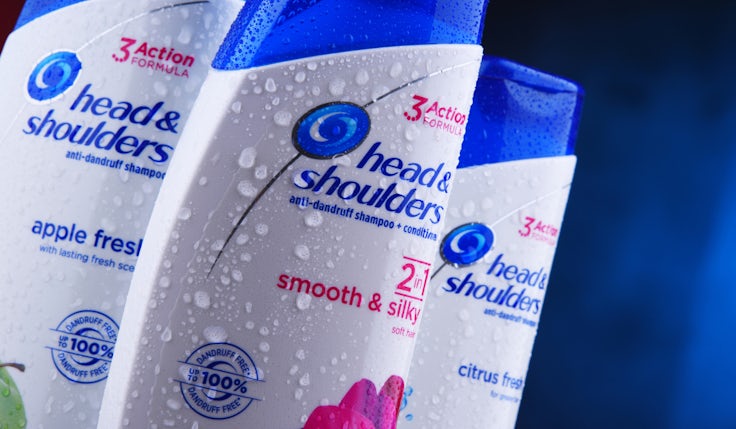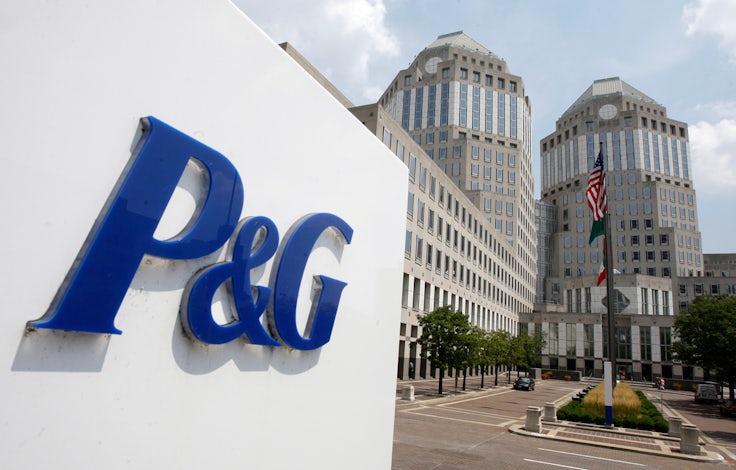P&G reports more effective marketing after upping digital spend
The FMCG giant has reduced marketing spend as a percentage of sales by 80 basis points, while driving a 6% increase in net sales.
 Procter & Gamble (P&G) has reported a notable improvement in the effectiveness of its marketing spend, three months on from vowing to increase its investment in digital media.
Procter & Gamble (P&G) has reported a notable improvement in the effectiveness of its marketing spend, three months on from vowing to increase its investment in digital media.
At the same time, the FMCG giant has continued to up its marketing investment to communicate the “superiority” of its brands, which has enabled it to raise its prices in the US over the last quarter without any “notable changes” in consumer behaviour.
In the business’ financial results for the second quarter of its fiscal year, P&G revealed it had increased marketing spend by 50 basis points compared to the same period in 2020.
However, overall marketing expense as a percentage of sales decreased by 80 basis points, signalling that the business’ marketing spend is working harder and driving a greater volume of sales.
Speaking to investors today (19 January), chief financial officer Andre Schulten said the improvement was driven by sales leverage and savings in “non-working marketing costs”.
Building on the strength of our brands, we are thoughtfully executing tailored price increases.
Andre Schulten, P&G
While he did not break down in which channels marketing investment had been spent, Schulten said during P&G’s last financial update in October that the company was hoping to “optimise” its marketing strategy by ramping up digital media spend across all markets.
“We estimate there’s still significant opportunity to optimise our ability to reach consumers more broadly and more effectively at significantly lower cost,” Schulten said at the time.
“[We will] increase the percentage of digital media around the world, as we continue to optimise our own algorithms to target messaging to consumers.”
P&G reported net sales of $21bn (£15.4bn) for its latest quarter between October and December, an increase of 6%, or $1.3bn (£954m) versus the second quarter of the 2020/2021 fiscal year. Net profit rose 9% from $3.9bn (£2.9bn) to $4.2bn (£3.1bn).
Nine out of 10 product categories grew share over the past three, six and 12 month periods in the US even as inflation takes its toll on household budgets, which Schulten attributes to consumers preferring P&G brands and “the superior performance they provide”.
Price rises fail to put off consumers
However, P&G’s CEO Jon Moeller admitted the business has never faced more “volatility” than it is currently experiencing across geopolitics, regulations, health, supply and labour.
The impact of the new Covid-19 variant Omicron, combined with inflationary pressures and supply chain difficulties, are all driving up operational costs. The business is looking to offset a portion of these cost pressures with price increases, Schulten said.
“Building on the strength of our brands, we are thoughtfully executing tailored price increases. We’ve [combined] price increases with innovation to improve consumer value along the way,” he said.
The company announced price increases in each of its 10 product categories in the US, with rises in baby care, feminine care, adult incontinence, family care, home care, hair care, grooming, oral care, skincare and detergents now effective in market.
Increases in detergent prices have also taken place over the last few months, Schulten said. Price increases on certain healthcare brands in the US were also announced to retailers yesterday, effective from mid-April.
P&G vows to increase digital marketing spend amid growing cost pressures
“We expect pricing to be a large contributor to sales growth in the back half of the fiscal year as more of our price increases become effective in the market,” Schulten said.
“As this pricing reaches store shelves we will be closely monitoring consumption trends. So far, we haven’t seen noticeable changes in consumer behaviour.”
P&G said price elasticity has been lower than would have been seen historically, with price elasticity on brands that underwent increases in September and October in the range of 20-30% lower than the business would have expected based on historical data.
Demand for the business’ best performing, premium-priced brands remains “very strong” as their market share trends upwards, Schulten added, crediting the “strong superiority” of P&G’s brands.
“For the price increases where we have a sufficient read period at this point in time, we have seen a more benign reaction of the consumer. The consumer is healthy generally and is preferring our brands,” he said.
“So we take comfort in the strength of our brands, the broad based growth of the portfolio globally, the broad base growth of the portfolio across categories and the short-term reaction of the consumers.”








Nine out of ten effective digital marketing strategies grew over the past three years such as making Monter Logo Designs, minimalist websites, user-friendly content, etc.